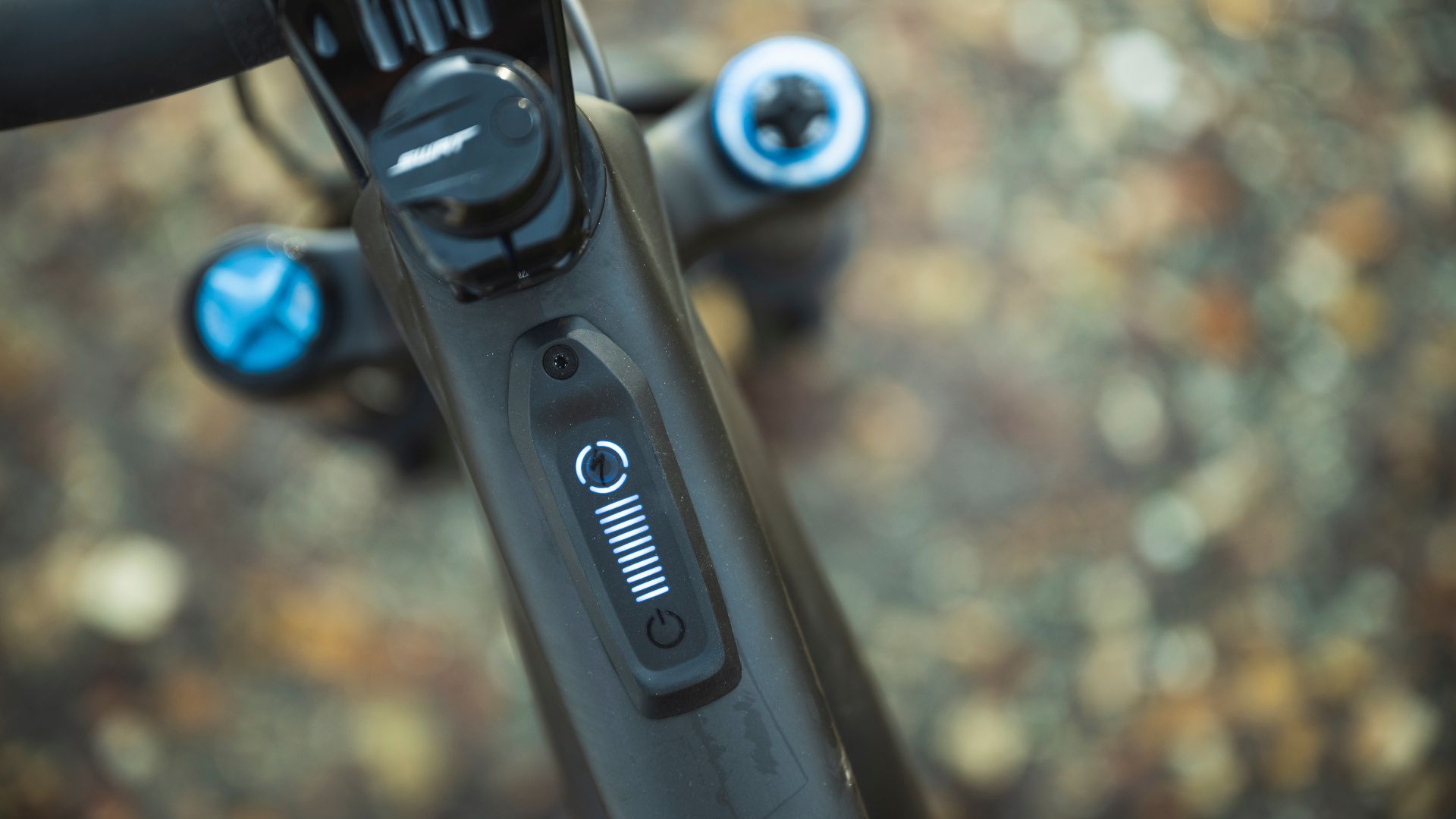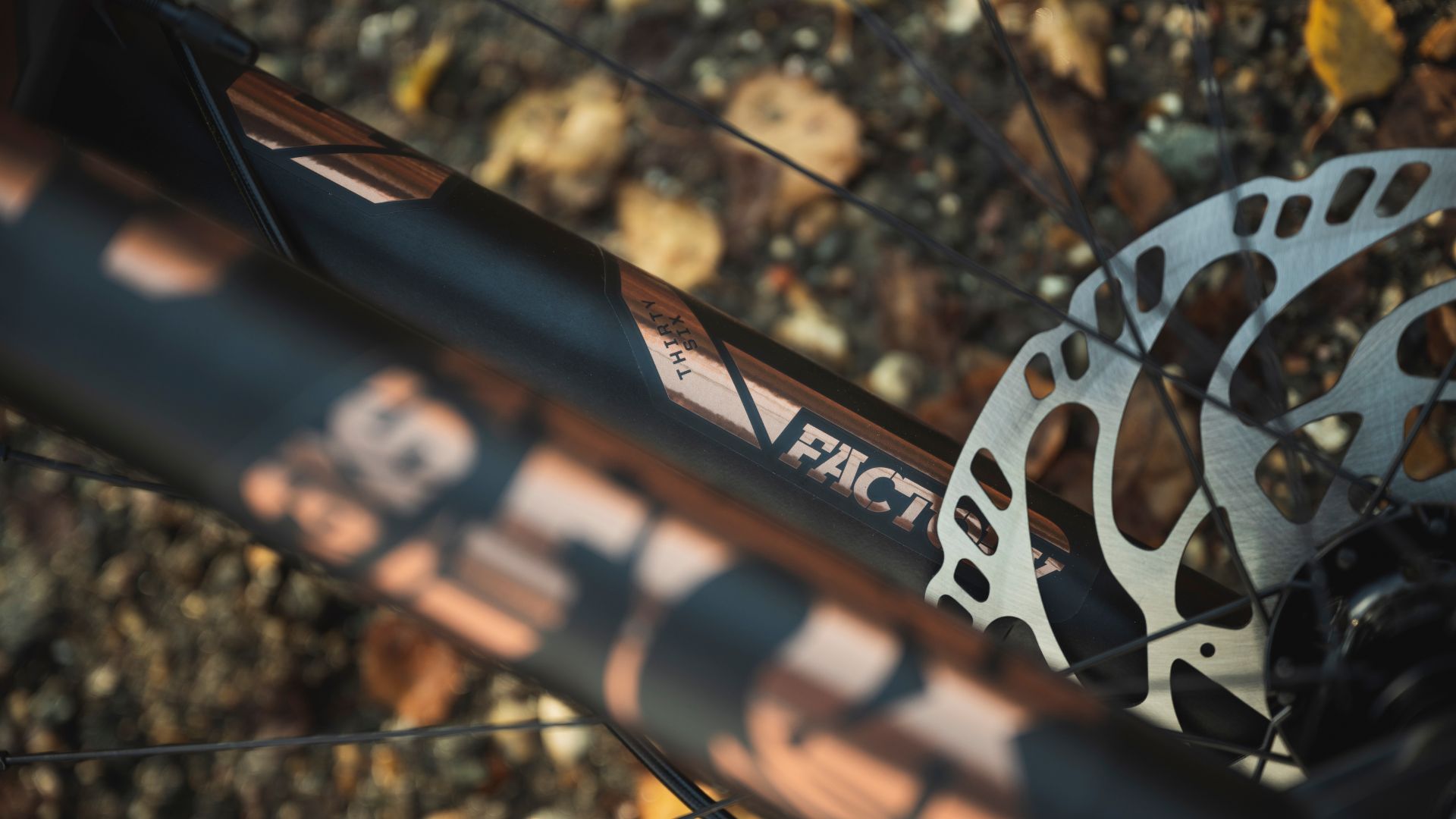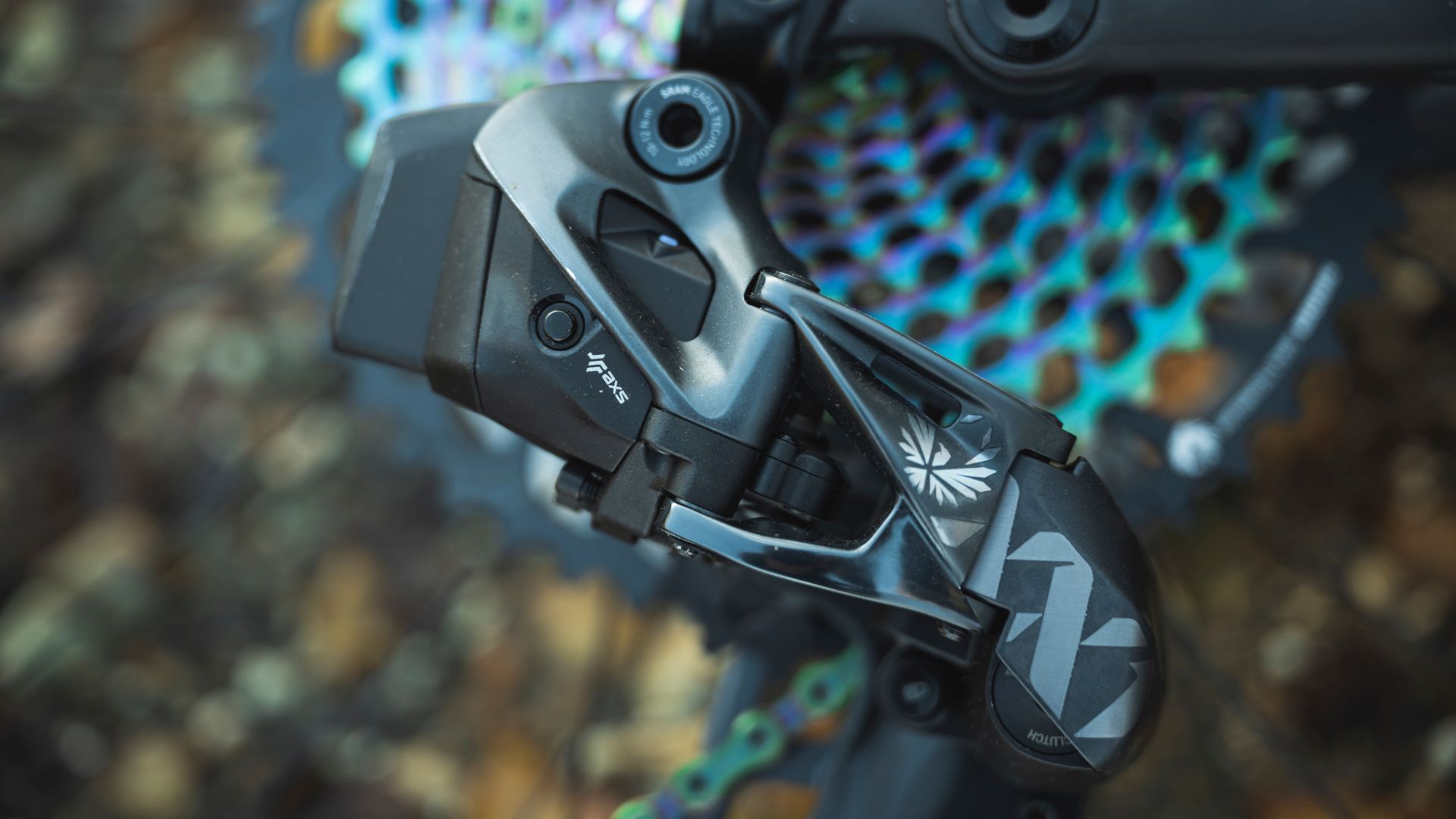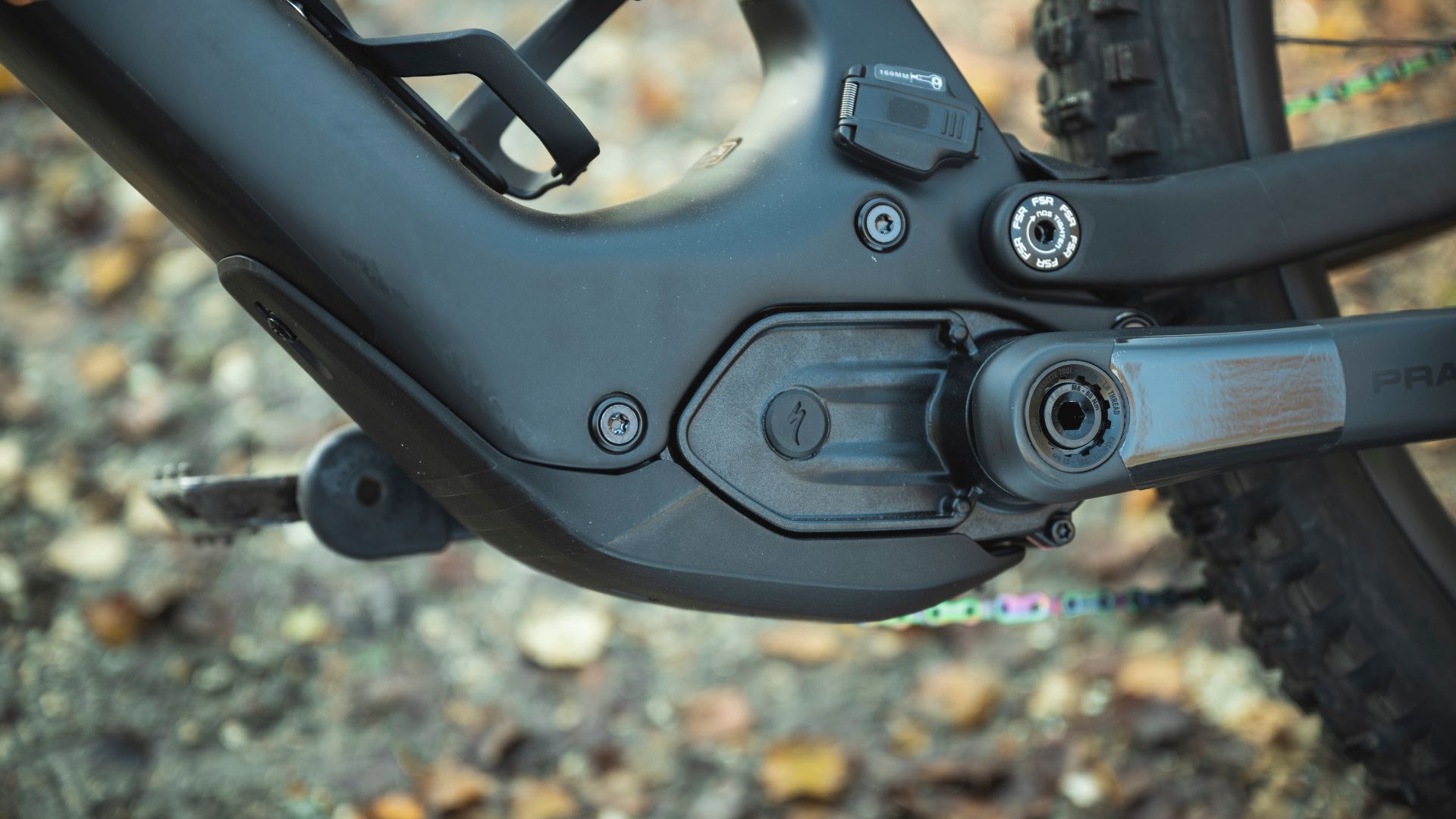Looking for an electric mountain bike that's light, has an impressive range and excellent suspension? The Specialized S-Works Turbo Levo SL may not be the newest kid on the block, but it sure has plenty to offer.
Specialized S-Works Turbo Levo SL review
When Specialized launched the Levo SL back in 2020, it was going where no mountain bike brand had ever gone before. And while it wasn’t really a moonshot, it was still a leap into the unknown that paved the way for all of the other lightweight mid-powered e-bikes that are now proliferating on the market. Is it still one of the best electric mountain bikes now that the competition is stiff? In this test we gather the latest diet e-bikes together for a high-voltage shootout.
Need to know:
- Flip-Chip in the shock eyelet offers high and low geometry settings
- S-Works bike ships with 160Wh range extender included
- Top of the range SRAM XX1 AXS drivetrain with 10-52t cassette
- Roval Traverse SL 29in carbon wheels, provide a very compliant ride

How has the original 150mm travel lightweight e-bike aged? Well, it certainly isn’t suffering from a case of middle-age spread. In fact, it’s one of the lightest bike e-bikes still, when compared to the likes of the Trek EXe, Forestal Cyon Neon 29 and Pivot Shuttle SL 29 Team XTR – and by quite some margin.
Decked out with a SWAT tool, bottle cage and our EXO+ casing Maxxis control tyres, the S-Works Turbo Levo SL weighs a scant 17.65kg, with no obvious concession to strength or durability on the specification. That’s almost 1.5kg lighter than the Trek Fuel EXe.

And having a bottle cage fitted as standard is really important, as the S-Works Levo SL is the only bike in the Levo SL line to come with a range extender as standard trim – the 160Wh bottle battery adding 50% to the range of the 320Wh main battery housed inside the downtube. And given that the range extender normally costs £340 extra, the Levo SL looks surprisingly good value for money.
Even without the range extender, the Levo SL burned past the Forestal Cyon and Trek Fuel EXe in our range test, only narrowly losing out to the Pivot Shuttle SL with its 430Wh battery.
Yes, you have to work harder on the Levo SL, as the 35Nm motor isn’t as poky as the 50/60Nm units elsewhere in this test. The motor is very efficient though, so when you’re emptying your tank, it never feels like the bike is robbing you of precious energy.

Yes the LED power display looks basic, but the remote switch that lets you toggle between the three power modes is one of the best, as is the rest of the integration. Even the speed sensor on the rear drop is that much neater and better protected than any of its rivals.

Suspension
Having the bottle cage mounted so low in the frame is a boon too, as it keeps the extra 1,092g range extender low and centred. As such, fitting it has less of a negative impact on the handling and suspension. Which is a much more important than where the 450g shock is positioned, right?

And it’s actually the Fox Float DPX2 shock that dates this bike. Not in terms of performance, but it’s been replaced by the new Float X, just as brands were getting to grips with the tuning possibilities of the DPX2. So the S-Work bike is a carry over model from 2022, but that doesn’t detract from the fact that Specialized has absolutely nailed the 150mm travel rear suspension on the Levo SL.
Specialized has absolutely nailed the 150mm travel rear suspension on the Levo SL
And while it shares a similar suspension layout to the full power Specialized Turbo Levo, with considerably lower anti-squat and a less progression rate, the SL has more grip and a much less hectic ride feel.

The 150mm travel Fox 36 Factory fork has every bit the measure of the rear suspension, and it felt noticeably smoother and more sensitive that the e-bike tuned version of the Fox 36 on the Pivot. Then again it’s hard to say if it’s just the tune of the Grip 2 damper, as we didn’t test the forks insolation.
Components
There’s a saying in motor sports, that if you want to go faster, you fit better brakes. Well the opposite is kinda true here. The Levo SL is such an eye wateringly fast bike, you need those bigger, heavier, 203mm rotors and Magura MT7 brakes just to reel it in a bit.
Playing around with the reach adjustment on the very first ride, we unscrewed the adjuster a little too far and the lever return spring popped out. And it’s not something you can just pop back in trail-side, so be warned. And while there’s no faulting the power and modulation of the MT7 brakes, we preferred the lever feel and position of the 1-finger HC lever blades on the Forestal.

Engagement on the Roval Traverse SL rear wheel was fast and consistent, and while the carbon 29in rims come with tubeless ready rim tape installed, the wheels also ship with individual plastic spoke hole covers that replace the rim tape and are 24g per wheel lighter.
Taken together with the suspension and frame stiffness, the Roval wheels help give the Levo SL a nice damped ride feel, with no sudden deflections or nasty surprises to catch you out.

The SRAM XX1 AXS drivetrain is also first rate, where the 10-52t cassette and smaller 30t chainring really come into their own when you are limping home in eco mode, or worse still, when the battery is totally flat. And while the big chunky Deity stem looks cool and feels solid, there’s probably some weight to be saved here, if you’re hell bent on getting the Levo SL under 17kg.
Performance
With the lowest torque, smallest battery capacity and least progressive geometry, you could be forgiven for thinking that the Levo SL is well past its prime. Ride it, however, and one thing is crystal clear, this bike is so much more than the sum of its parts.

The finely tuned suspension, balanced weight distribution and flex in the full carbon frame make it such an easy bike to ride fast. And because the rear suspension is free to move up and down, as it’s less inhibited by the drivetrain, the bike carries more speed forward across choppy terrain that would typically chip away at your momentum and confidence.
So even with the same tyres on all four test bikes, the Specialized sounded and felt more damped, much in the same way softer compound tyres would, albeit without the extra drag. It is not damped to death though, it’s poppy, lively nature and shorter wheelbase making it super easy to manoeuvre, especially at lower speeds. And while not as light as an analog trail bike, the Levo SL masks its extra weight extremely well.
Now we’re not saying that the Levo SL wouldn’t be even better with a slightly steeper and short seat tube, and a more generous reach measurement. Maybe even with the S sizing and adjustability of the Stumpy Evo.

No, what we are saying is that you shouldn’t get sucked in to the numbers game. Yes, there’s less support from the 35Nm motor so you can’t soft pedal and expect the bike to do all of the work for you. But anything you do put in above and beyond the 320W peak power of the motor isn’t wasted on overcoming resistance.
So if you want a bike for trail riding that’s light, has a great range, and can also get you safely down the nastiest of descents, don’t discount the Levo SL, even if Specialized has done just that.
- Best electric mountain bikes: join the riding revolution
- Best budget electric mountain bikes
- Seven performance metrics every mountain biker should aim for
E-bike comparison chart
For our power-hour challenge, we put all four bikes in max power mode, be that boost, Rocket, level 3 or Nitro. We then rode the same test loop where the bikes were fitted with the same tyres, ridden in the same conditions, by the same rider. The results were surprisingly different though. The loop consisted of one steep technical climb, two fireroad climbs and a few Tarmac climbs, depending on the bike. We recorded time and elevation to limp mode, typically 10% battery life, then rode until the lights went out.

Pivot Shuttle SL V Levo SL V Forestal V Trek Fuel EXe range comparison
Probably the most telling metric of all is the number of trails ridden. On the Pivot shuttle SL we completed 7 descents, which is almost doubt that of the Forestal. We also used the estimated calorie burn as a proxy for effort, where the calories burned per metre for elevation gives a good indication of rider input on each bike. The Specialized Levo SL required the most rider input, the Forestal Cyon the least.
Verdict
Want the lightest bike in this test? It’s the Specialized Levo SL at 17.65kg. Want the bike with the most range? Again, it’s the Levo SL, the S-Works bike coming with a 160Wh range extender to give a total battery capacity of 480Wh. Want the bike with the best suspension? Well, that’s the Levo SL too. Want the bike with the most cutting edge geometry and sizing? Sorry, you’ll have to wait for that part. But given how right Specialized got everything else, the Levo SL is still a really competitive bike, even though it’s three years old.
















